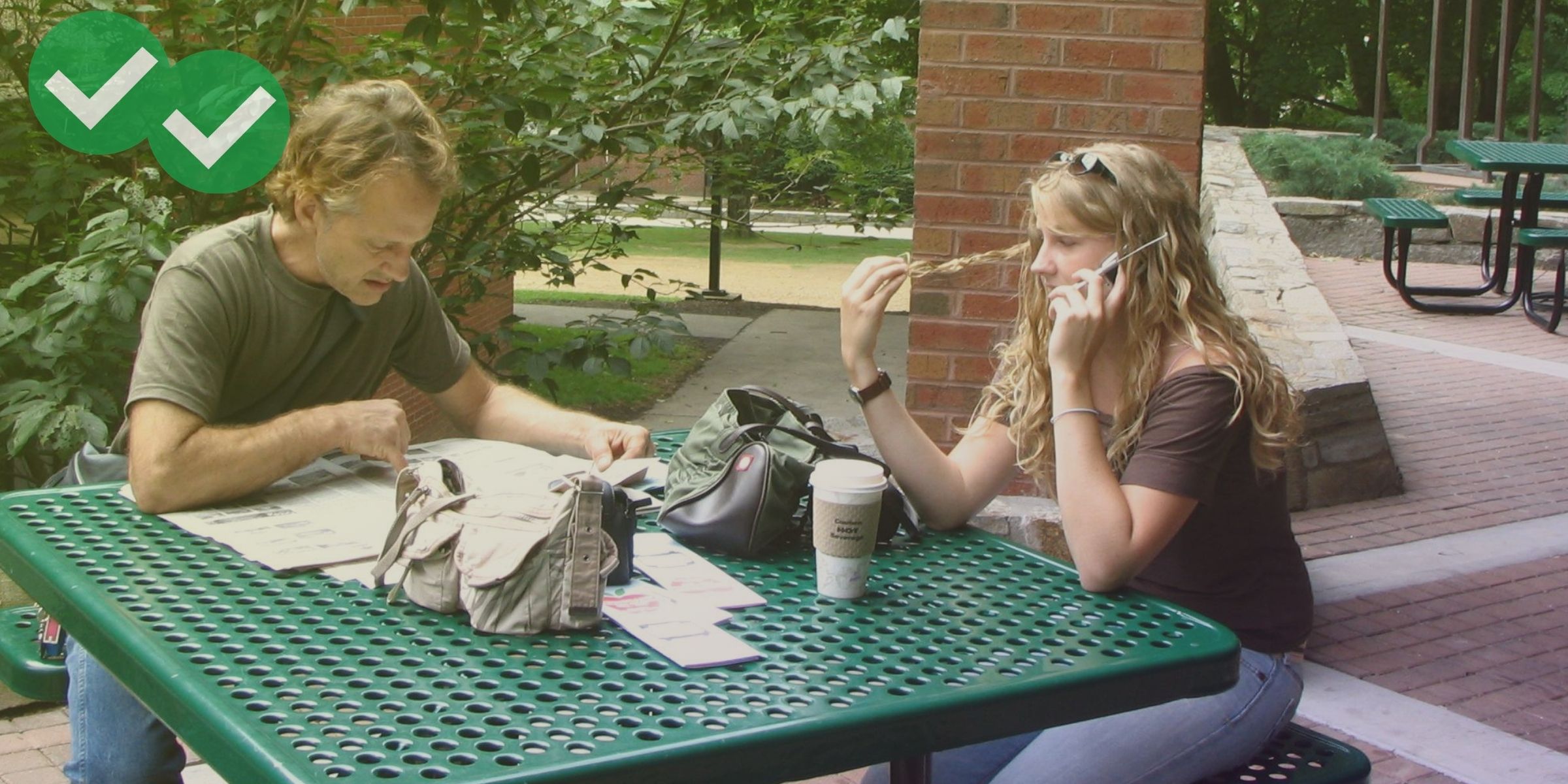(EDITOR’S NOTE: This post refers to Speaking Task 5, a task that is no longer part of the exam after the 2019 TOEFL changes. However, the focus of this post is on pacing and intonation in English speech, rather than the specific instructions and requirements of the old Task 5. So students may still find this post helpful.)
In my previous post, I showed you a sample Speaking Task 5 response from a student. (Thanks again to this young woman for letting us use her voice here on the blog!) To see a transcript of the Task 5 audio track she was responding to, go here. You can listen to the audio again below:
Last time, we looked at some of the general ways the student could improve her speech, in terms of talking more slowly and improving her intonation. This time, we’re going to get much more specific. I’ll show you some specific parts of the student’s response and explan how they could be changed.
The examples appear below, with the time in the recording that they can be heard, my transcript of the student’s words, and notes on the changes she should make. For some of this Magoosh student’s lines, I have attached recordings of my own voice so that you can hear a corrected, native English accent version of what the student said. Let’s get started!
- 0:05 “Between– she has two options.” Here, it seems like the speaker abruptly changed her sentence structure. She was going to describe the situation using the word “between.” Then she suddenly decided to use much different wording. If you decide to completely change your wording mid-sentence, it’s much better to pause more slowly and naturally, and maybe use a verbal pause (such as “uh,” “um,” or “well”) as you change your wording. For an example of how such a change might work, listen to the following sound clip here or below:
- 0:07 “One ee— is either to go to (???) with her boyfriend” As I said in my last post, the student’s stammering actually isn’t really a problem here. She started to say “either,” then quickly corrected herself to say “is either.” With only a minor change in wording, she doesn’t need to make a slow, clear correction or use verbal pauses. Listeners will be able to keep up with minor changes. However, it was really hard to understand that she was saying the girl in the conversation would go to “Brazil.” I was only sure she’d said “Brazil” when she said it a second time later in her response. Here, her accent combined with very fast speech is making her hard to understand.
- 0:15 “Or actually– or help as a research assistant.” Here again, she made a significant change to the wording of the sentence, and changed things abruptly, with fast speech. This is not as big of a change as the one at 0:05 in the recording, so she doesn’t need to make the change as carefully or slowly. But she should slow her speech down at least a little, so her mid-sentence change in wording is easier to understand. To hear how this line could sound with slower speech, listen to my reading of the line here or below:
- 0:26 “Because she can– even though the research that she’ll be performing is going to be…” Again, we see an abrupt change in wording— and this Magoosh subscriber speaks too quickly. Once again, listen to my corrected version of the speech here or below:
- 0:33 “And uh- with– and has gotten some concrete material, solid material” This student clearly has a pretty good vocabulary and decent listening comprehension. But this is one instance where she does seem to make a vocabulary mistake. In the conversation she listened to, there is talk of putting something “concrete” on a resume. This means putting something on a resume that indicates formal, useful experience. This Magoosh student’s use of “concrete” has no clear connection to the use of “concrete” in the audio track. It’s likely she is misunderstanding and misusing the word.
- 0:40 “And with this basic information, she can actually (???) to find a real job.” Here, it’s really hard to tell what word she said between the words “actually” and “to find.” She needs to enunciate more clearly— and as I said in my previous post, many of these problems with understandability could be solved if she simply spoke more slowly.
That’s it for the major “trouble spots.” Except some of the things I noted above, pronunciation is actually a strength for this student. Most of her pronunciation is very understandable. Even the times I can’t understand her, she would probably be understandable if she just spoke more slowly, and used a more native-like intonation.
And that’s why this example and my corrections can be so useful to you, the reader. I listen to Speaking samples from Magoosh TOEFL students every day. So many of you have responses that could get high scores with a two easy changes: slower speech, and better use of the rules of English intonation.
Thanks once more to the Magoosher who donated her recorded response to these two posts— I think this will help a lot of students!





